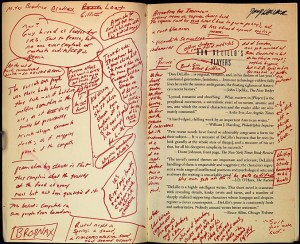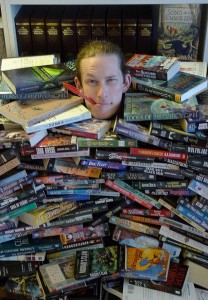There’s not a lot out there about developing one’s writing style. Because it’s supposed to be yours, right? No one is supposed to help you shape that: it’s uniquely yours. YOUR voice. But how far, exactly, can you go with that? When does style obstruct grammar rules? When does style turn off potential editors and publishers? Unfortunately, there is no right answer.
Let me explain.
Over the years, I have heard various editors from Baen, Harper Collins, Shadow Mountain, and other publishing houses on panels explain, “I want something new. I don’t want the next Stephen King. I don’t want the next Stephanie Meyer. I want you. I want your unique style and your unique voice.” One might be thrilled to hear this call for individualism. “Then I’ll send in my personal style where I don’t use quotations, and don’t capitalize anything!” I want to say that takes it too far. But then again, there’s James Frey. Munch on this little excerpt from his break out novel A Million Little Pieces.
Hey, Buddy.
His voice is deep and dark.
Hey, Buddy.
Tracks crisscross his forearms.
I’m talking to you.
Scars run the length of his wrists.
I’m talking to you.
I look in his eyes. They’re blank.
What?
He points.
That’s my chair.
I turn back to the television.
Did that blow your mind? It should. Most manuscripts that stylized do seem to make it past the slush pile… across the desk and into the trash can.
“Perhaps I’ll send in my manuscript of one-liners that play around a semblance of a plot!” Again, I’m hesitant to negate this, too. Behold the king of one-liners, Oscar Wilde.
“How about my hard-to-follow stream of consciousness novel?” I must hold back from rolling my eyes and sighing, as this is what James Joyce is famous for.
“Ah, but my extremely lengthy novel filled with citations!” I would say that would be

boring, but then again, David Foster Wallace’s Infinite Jest is on almost every bookshelf of every English major in America.
A very wise editor and friend, Joshua Essoe, once told me something along the lines of: “Prove you know what the rules are before you go and break them.” I think this is fantastic advice for new writers. Editors and publishers need to trust that you know what you’re doing. Slowly injecting your style as you go is the way to job security.
At the same time, I can’t help but wonder: what if the authors I’ve mentioned above had done the same? Maybe if they hadn’t boldly stepped out into the world with their styles fully realized, style wouldn’t be as important as it is today. Maybe we should be so bold as to say, “Yes, I know my style is unique, but just read it, and let me know if it doesn’t just knock your socks off.” Because chances are, if your story is solid and engaging, your style will only add to it.
 Kristin Luna has been making up stories and getting in trouble for them since elementary school. She writes book reviews for Urban Fantasy Magazine, contributes to the blog The Fictorians, and her short story “The Greggs Family Zoo of Odd and Marvelous Creatures” was featured in the anthology One Horn to Rule Them All alongside Peter S. Beagle and Todd McCaffrey. Her short story “Fog” recently appeared on Pseudopod. Kristin lives in San Diego with her husband Nic.
Kristin Luna has been making up stories and getting in trouble for them since elementary school. She writes book reviews for Urban Fantasy Magazine, contributes to the blog The Fictorians, and her short story “The Greggs Family Zoo of Odd and Marvelous Creatures” was featured in the anthology One Horn to Rule Them All alongside Peter S. Beagle and Todd McCaffrey. Her short story “Fog” recently appeared on Pseudopod. Kristin lives in San Diego with her husband Nic.
